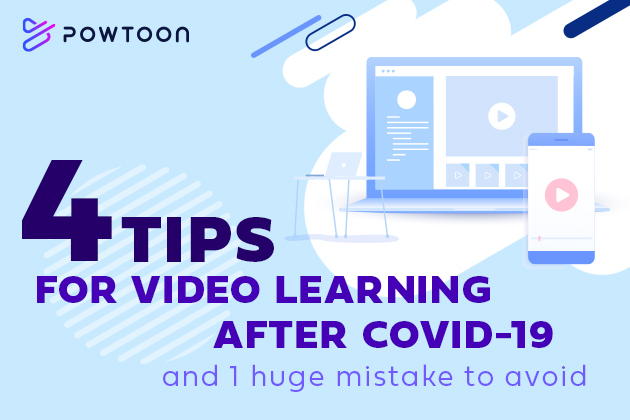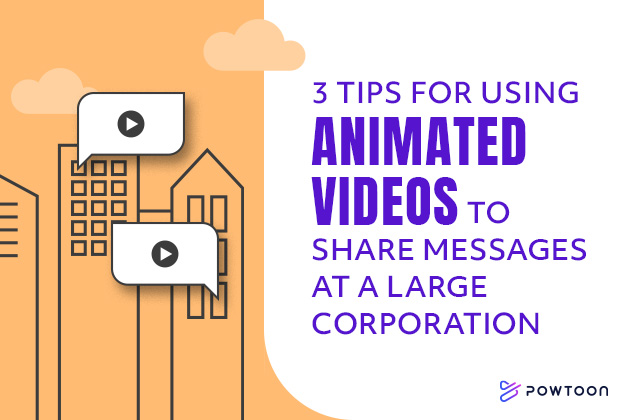
How to Create an Internal Comms Video Strategy
One of the toughest parts of being an internal comms professional is that you’re often expected to execute content without much lead time or budget.
It makes planning and being strategic extremely difficult. And when it’s all over, you’re left wondering if you even hit the mark.
This is true for all internal comms content… but it is especially true for video.
Internal video content is becoming more and more popular. And for good reasons: videos are more engaging, memorable, and more shareable than traditional written content.
They can be a great way to boost employee engagement as well as condense and deliver complex messages.
But they’re often more work and require more budget and lead time (exactly what you’re already having a hard time getting).
Without a good strategy, you could be left with an expensive mess on your hands—and no buy-in from leadership to iterate or improve.
So, before you start creating videos for internal communications, it’s important that you have a well-documented plan of attack.
In this post, we will help you map out a simple, yet effective internal comms video strategy that will help you:
- Get leadership and stakeholders on the same page, so you can secure budget and communicate expectations
- Set reasonable goals and measure the success of your video strategy
- Strategically share your video with internal audiences for maximum engagement
Why do you need an internal communication video strategy?
Creating an internal video plan not only forces you to think strategically, but also gives you something tangible to share with your stakeholders and leadership team.
A documented strategy shows that you’ve done your homework and you have a plan to use your internal comms videos to drive business results.
Once you have the plan in place, it’s much easier to communicate the goals and strategy with collaborators and get everyone on the same page. In the end, this will help you execute and get results faster.
Most importantly, when you have a plan for measuring your impact, you’ll be able to prove the success of your strategy. Even if your plan didn’t go as you expected, you’ll at least have what you need to pivot or adjust your strategy to make it more effective.
Your internal video strategy will also be useful to refer back to when you’re comparing engagement with traditional content types, when you need to make strategic decisions, and when you’re trying to put together a compelling case for leadership to invest more resources in future video content.
How to create an internal communication video strategy
Your IC video strategy is meant to be your north star—the guiding light that will help you decide if something is working, or whether it’s worth doing at all.
Documenting your strategy will help keep you focused on why you’re doing this work, who it’s for, and what steps you can take to reach your goals.
Let’s get started:
Step #1 – Gather background information
The first thing you want to do is document the context in which this video strategy exists.
This includes relevant background on your company, the number of employees you need to reach, past challenges you’ve faced with internal video (or a lack of it), and why your company needs this strategy.
Ask yourself: how does video fit into your overall communication landscape? How do you want to use video?
For example, we use video for a few different purposes in our internal comms strategy at Bananatag:
- To drive excitement around change—we’re big fans of opening Town Halls with an inspirational, rousing intro video.
- To get employees excited before an external announcement. (For example, when we announced Bananatag and Staffbase were merging to become the world’s leading internal comms software company, internal video played a key role in breaking the news to employees.)
- To encourage emotional connection to our initiatives. Video is a great way to tell a moving story because you can incorporate music, images, and introduce a compelling narrative.
Step #2 – Analyze your current strategy
Even if you don’t already have a documented internal comms strategy, you need to analyze the activities, tactics, and results you’ve achieved in the past with internal videos and other comms content.
First, document the communication challenges you deal with, how you are currently trying to solve those problems, and if you’re seeing results.
Next, think about the kinds of content you’re currently creating:
- Are you writing a lot of long-form articles for your intranet? Do employees actually read them?
- Are there opportunities to replace blogs, articles, and meetings with video?
- What kinds of concepts and messages are better expressed through video?
- What are the costs, the advantages, and the disadvantages of using video?
Finally, run your current and prospective ideas through a SWOT or PEST analysis, while keeping an eye on those original challenges and problems that you’re solving for.
Your analysis is important because it will show you what’s already working and where you need to focus your video-making time, energy, and creativity.
Step #3 – Define your audiences and stakeholders
As an internal communicator, you already know how important it is to understand your audience.
And your organization likely already has data on your employee population that you can use to develop audience personas.
Make sure to list out your primary internal audiences and include any data you have about their communication preferences and needs.
All of this information will inform your strategies and tactics in step 6.
Next, list all the stakeholders who will be involved in your strategy: HR, IT, C-Suite, etc. This is important to make sure you don’t miss approvals or consults with anyone when it’s time to review and implement your strategy.
Step #4 – Set goals and KPIs
Without goals and KPIs, you can’t show that your strategy has a purpose, or that it worked.
Your primary goal should be what you actually want to achieve with your video strategy. For example, your goals could be:
- Increase employee engagement
- Help employees understand complex or sensitive information
- Support the business through change
Typically, you’ll have between 1-3 goals. They don’t need to be measurable, but they should be aspirational—and realistically attainable. At the end of your project, you should be able to look at these goals and have a sense whether you really did achieve them.
But of course, you can’t have a goal without KPIs—specific measurable achievements that will indicate you’re reaching your goal.
The great thing about video is that there are a ton of ways to measure success, including view time, repeat views, and shares.
Pick a few KPIs that align with your goals to get started.
If you’ve never done video before and you’re not sure what kind of metrics you should be measuring or what kind of results you should expect, use your first strategy as a baseline.
Pick some aspirational numbers but don’t get disappointed if you don’t reach them on your first try. You’re doing the important work of benchmarking now, so you know how to set these kinds of goals and KPIs in the future.
Step #5 – Brainstorm strategies and tactics
Now onto the fun part.
This is where you decide what you want to create, what video creation and editing tools you’ll use, and how you plan to distribute your creations.
Strategies are plans for how you will achieve your goals and KPIs.
Tactics are specific actions you can take to influence your KPIs.
For example, your strategy might be to get employees excited about a merger with a new internal video. A tactic you can use is to send out an all-staff email with the video in it or use email to drive traffic to your intranet where the video is hosted.
List how you’ll measure the success of each strategy and tactic so that you can evaluate the impact of your tactics and report back on your outcomes.
Step #6 – Map your strategies and tactics to your goals and KPIs
In order to easily track how your strategy is progressing, what results you’re seeing, and whether you need to pivot or change up your tactics, make sure you map your strategies, your tactics, your measurements, and your results so they’re all aligned.
Creating a matrix like this will help make sure each section of your strategy is connected and results-focused:

Go forth and strategize
Now you have an internal comms video strategy!
You’ve done your research. You understand what to do to reach your audience and your goals. And now you have a plan you can share with your teammates, stakeholders, and leadership to get buy-in.
No matter whether you’re just starting out with internal video, or you’re a seasoned pro, follow these steps and you’ll be able to build a solid—and successful—internal video communication strategy.
Bananatag
Latest posts by Bananatag (see all)
- How to Create an Internal Comms Video Strategy - June 23, 2021






